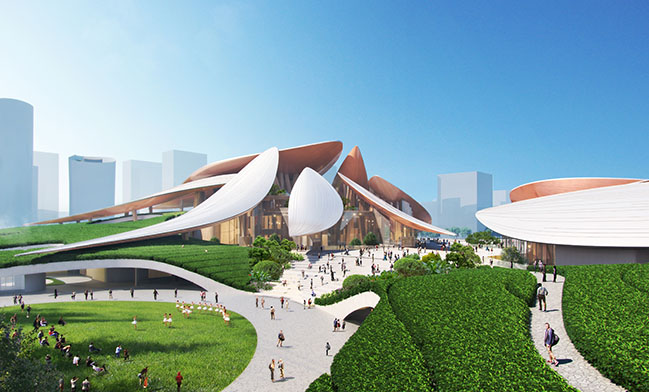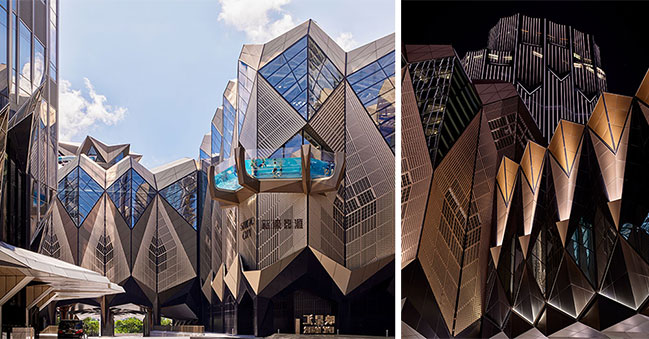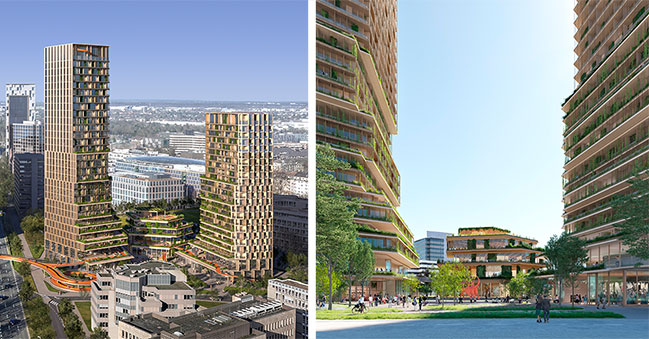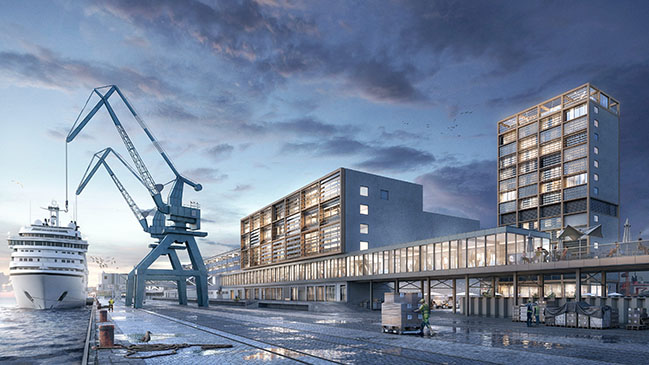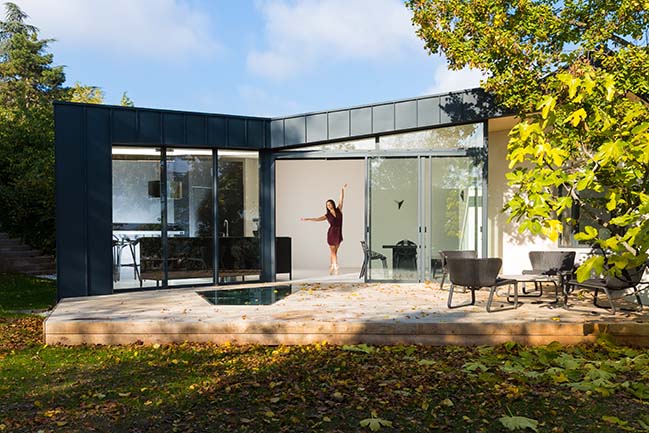09 / 15
2023
The Italian Pavilion will be a living organism, producing knowledge and innovation by cross-fertilising between generations and cultures: a vast warehouse of Italian know-how that will embrace artistic, scientific, entrepreneurial, and social experiments...
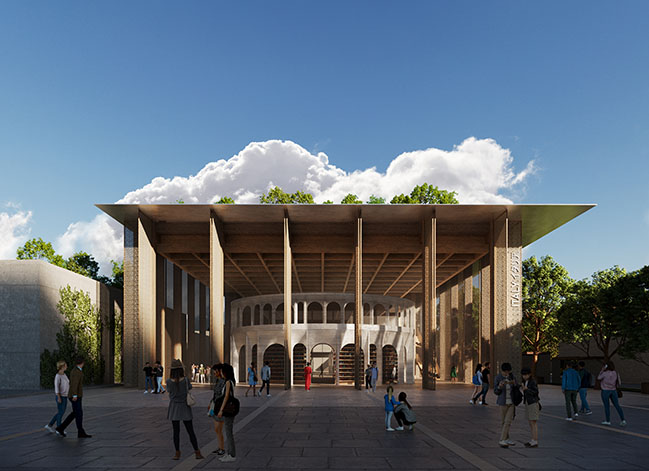
From the architect: The spaces of the Pavilion will bring to light and stimulate the creative DNA that is innate in all Italians, and that the whole world envies. The cultural artefacts of Italy's heritage will be placed in evidence, decomposed, and then re-proposed in an unexpected contemporary way. There are two parts to the Pavilion: a showcase building containing the exhibition itself (the core experience) and a service area containing the secondary functions, located behind the showcase. The pavilion presents itself as a structure that lets itself be suffused by the luminescence coming from the sky and sea around the site. The main frontage is an open portico with giant columns, offering a view into a large atrium and framing the architecture of the internal visitor route.
Mario Cucinella: Statement "Designing the Italian Pavilion for the Osaka Expo 2025 is a unique opportunity to create an authentic platform on which to present - to a global audience – the culture, history, and innovation of our country, and to create a place where connections for future collaborations will be woven and where ties for cultural, social and economic exchanges will be strengthened. In keeping with the Expo subtheme Saving Lives and with the objectives of the SDGs, the project for the Italian Pavilion, and the compositional, technological and material decisions involved in it, will promote a renewed balance between man, nature and technology and can become a powerful tool for promoting and inspiring action, and for establishing new synergies to develop a more sustainable future. The Italian Pavilion stands for a new idea of society, and for the city as a living organism where the relationships between people, art, the environment, and history can materialise."
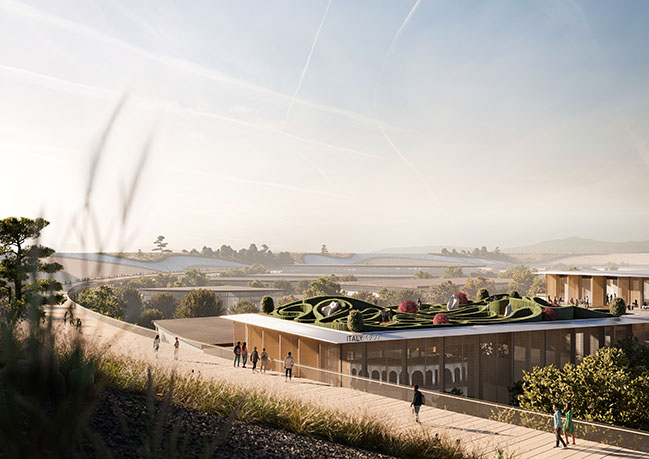
Visitors will be guided through a creative journey, gradually becoming one with it; fully immersed in the colours of the Renaissance paintings, the proportions of the urban spaces, and the feeling of sociability, they will find themselves unmistakably “breathing the air of Italy”.
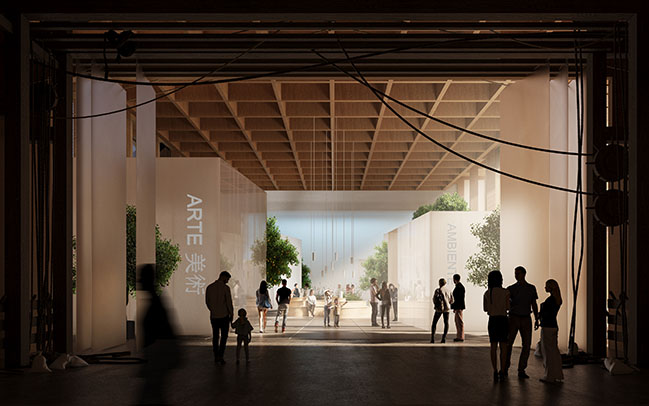
This dramatic experience is divided into three separate “acts”, each rooted in locations and experiences in which Italy has been an innovator:
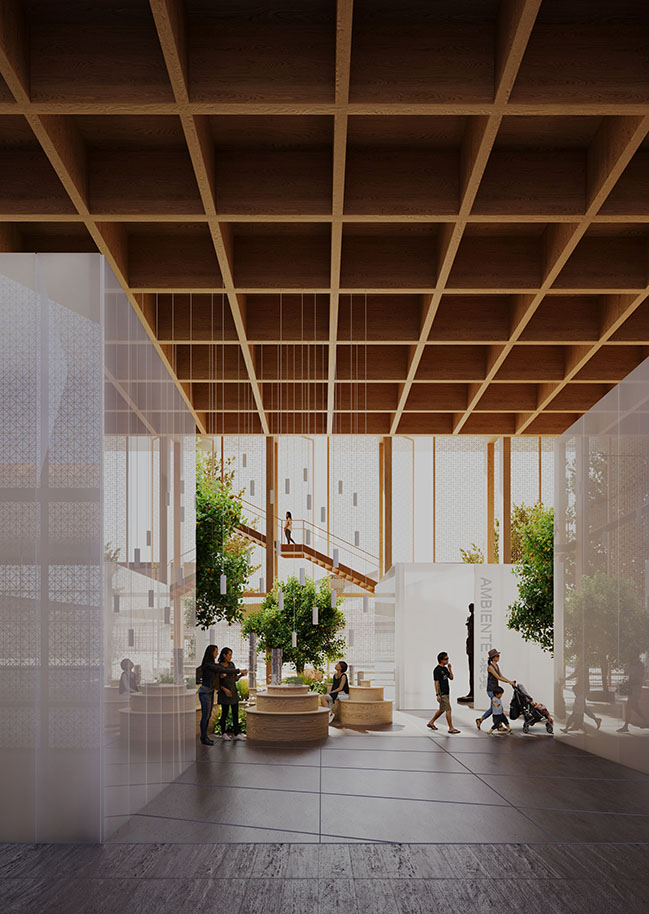
The Theatre
Italy's theatrical heritage (in the architectural space, technological innovation, and revolutionary acting methods) is limitless. Visitors to the Theatre will experience an alteration of their perceptions and possible future scenarios will suggest themselves; the spectator will become interchangeable with the actor, and the real will become indistinguishable from the virtual, in an immersive, multisensory theatrical space that subjects the spectator to visual suggestions along with sounds, movements, and colours.
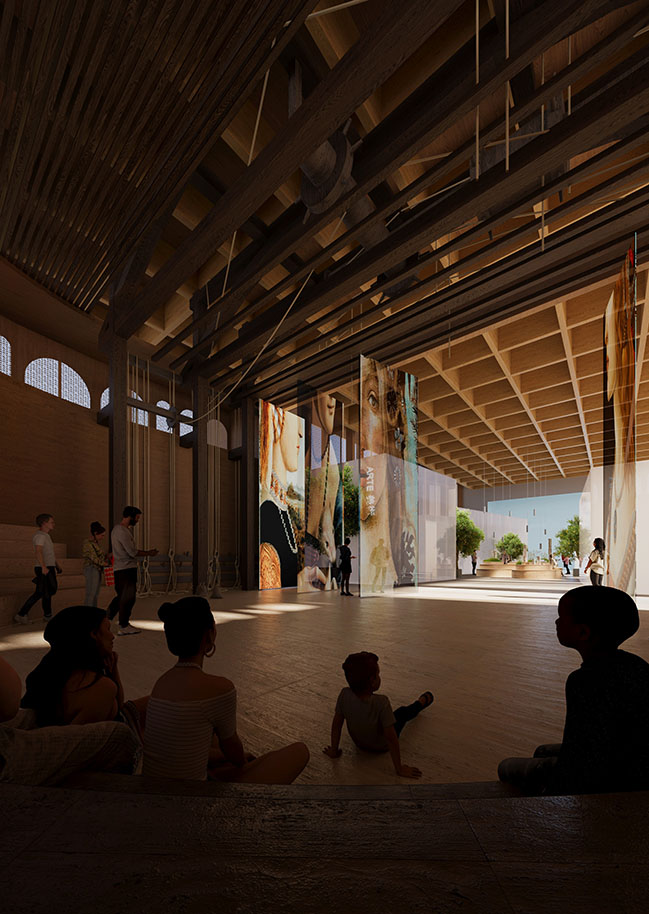
The Ideal City
The Ideal City first developed as a theme in fifteenth century painting to represent the theoretical Renaissance concept of the Ideal City and depicted it as a place of deafening emptiness, where the absence of human life made Utopia a dystopian, metaphysical place. That consideration will be an opportunity to bring back people, nature, sustainability, and life to the centre of the future Ideal City. The Ideal City experience is a space where a new future can be created by taking an inclusive, social approach that aims to enhance quality and craftsmanship by associating them with the new technologies. It is a space for narrative, in-depth knowledge, and creation and will include a series of modern workshops, each dedicated to a different theme: technology and energy; food and the environment; manufacturing and design; and art and architecture.
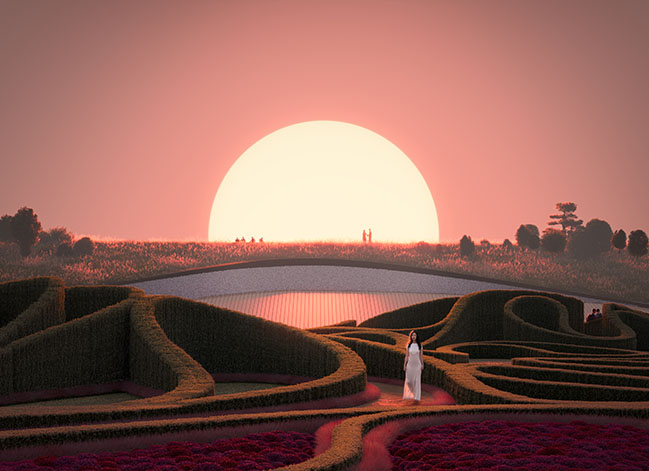
The Italian Garden
The Italian Garden on the roof of the Pavilion is a place for leisure and delight: a contemporary reworking of the classical idea of the labyrinth, an emblem of the control that humans exert over nature and constrain it by subjecting it to the rules defined by rigour and mathematics. The Italian Garden will be an opportunity for visitors to experience a new equilibrium between human and plant
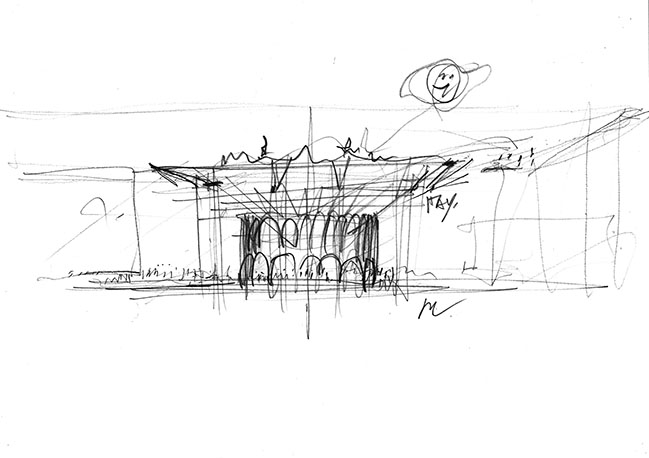
Architect: MCA – Mario Cucinella Architects
Location: Osaka, Japan
Year: 2023
Area: 3,000 sqm
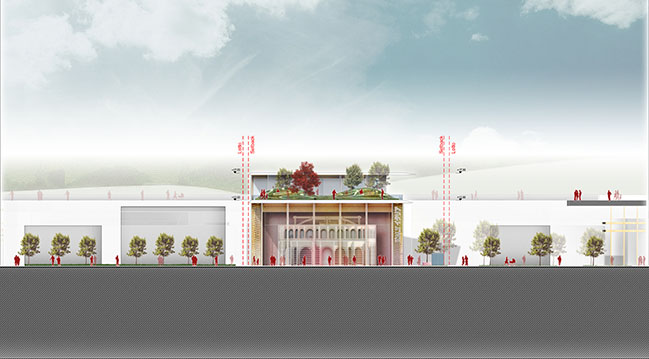

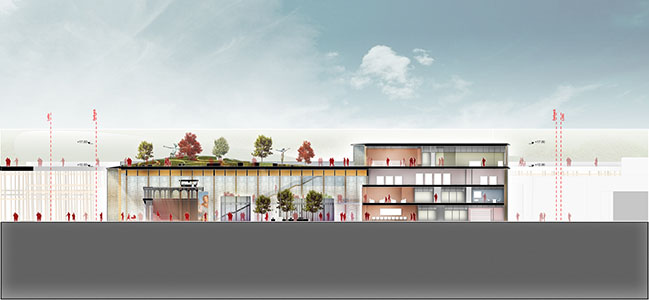
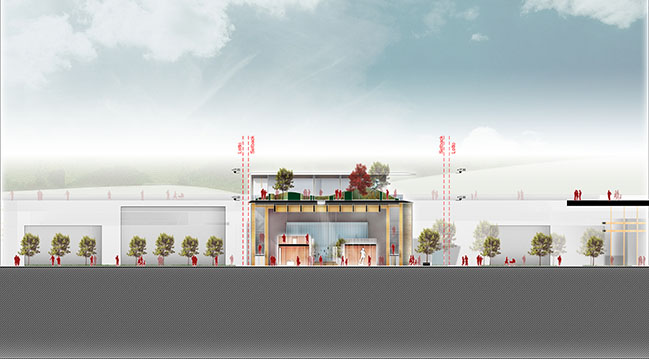
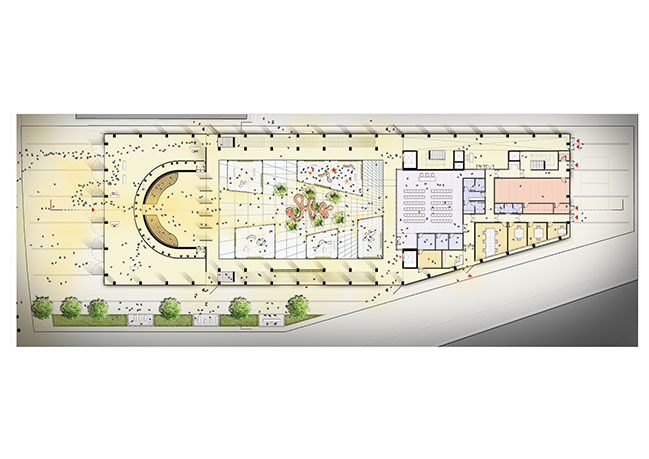
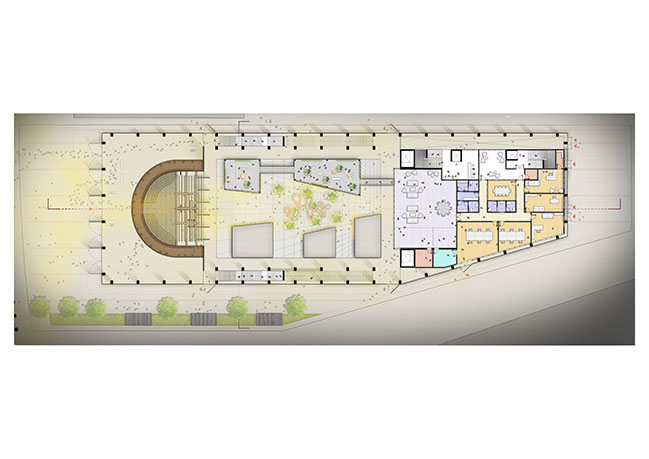

Mario Cucinella Architects unveiled design for The Italian pavilion at Expo 2025 Osaka
09 / 15 / 2023 The Italian Pavilion will be a living organism, producing knowledge and innovation by cross-fertilising between generations and cultures...
You might also like:
Recommended post: EDUT by Dank Architectes
